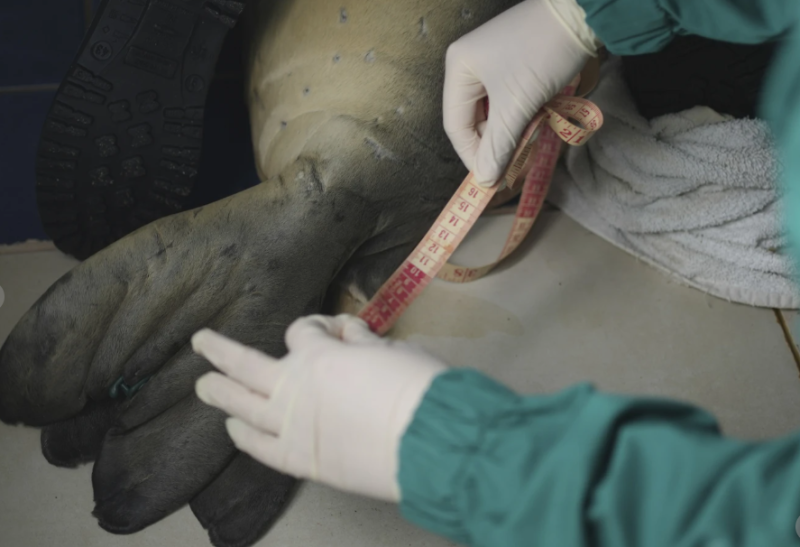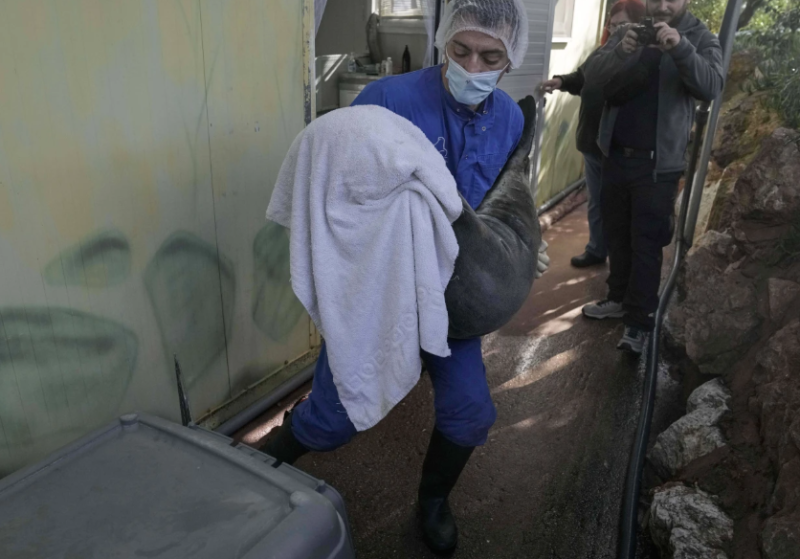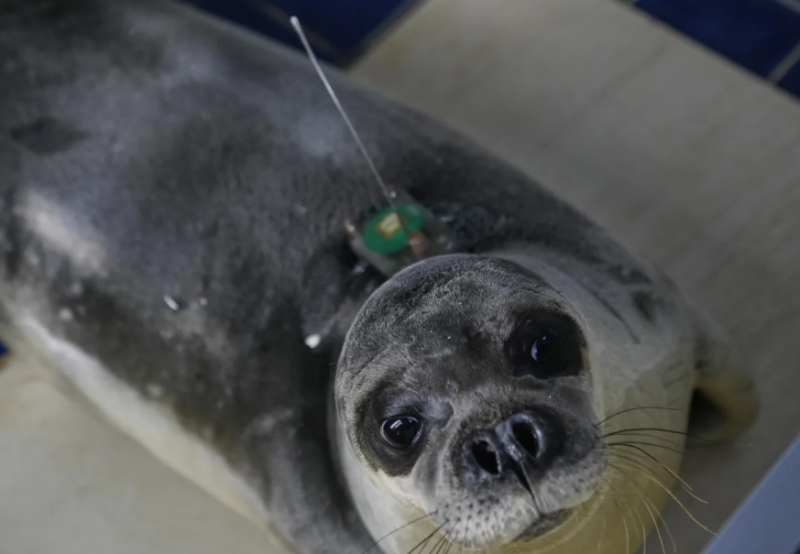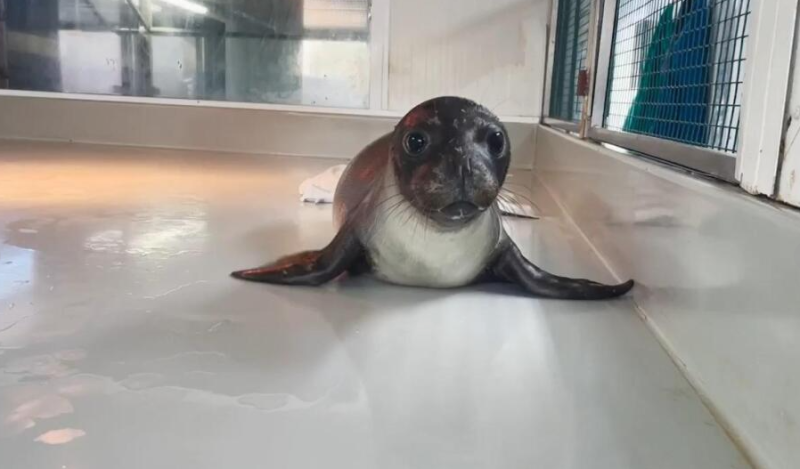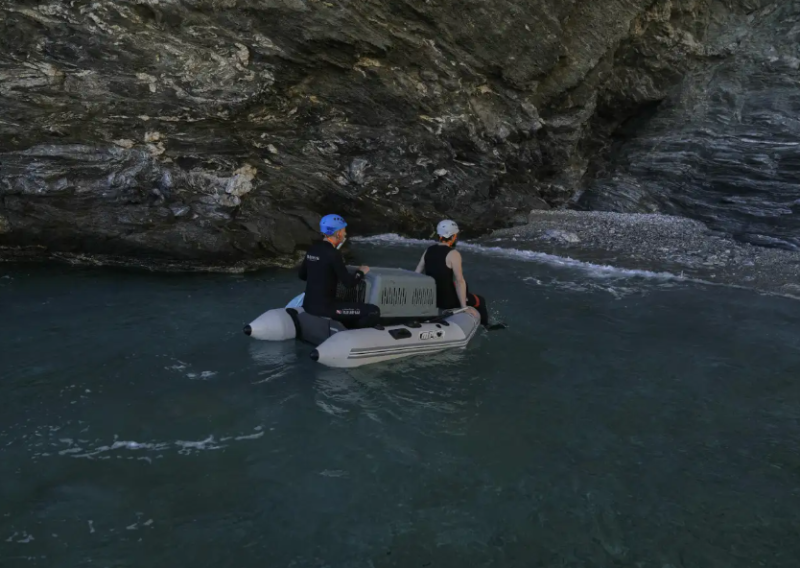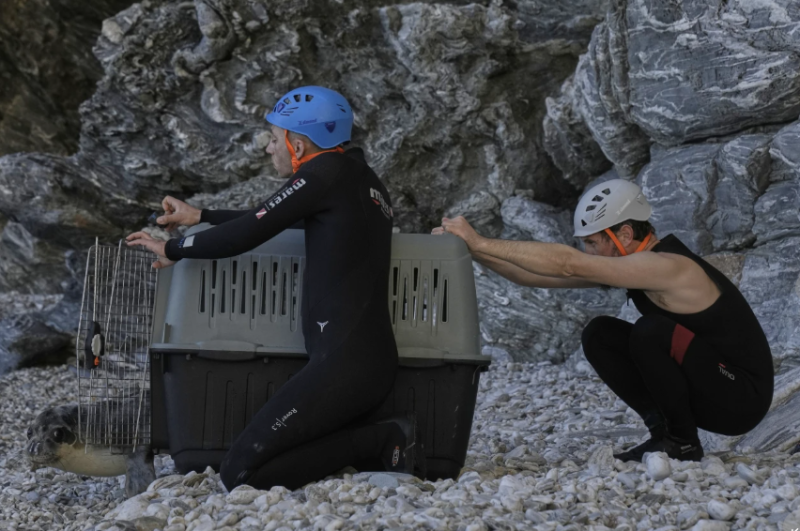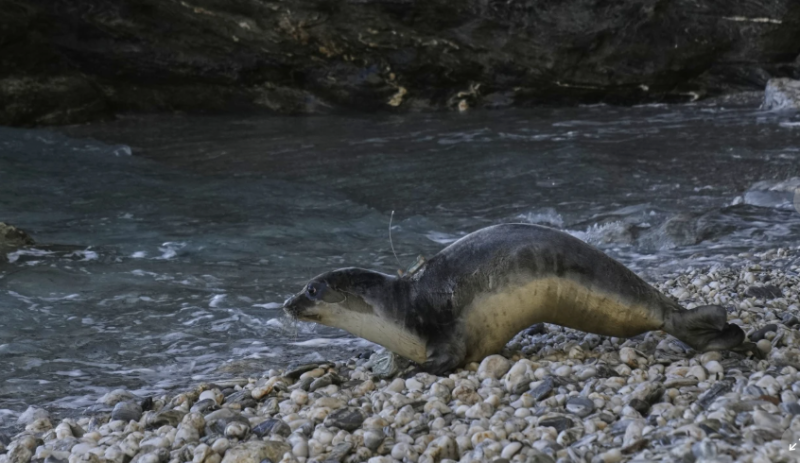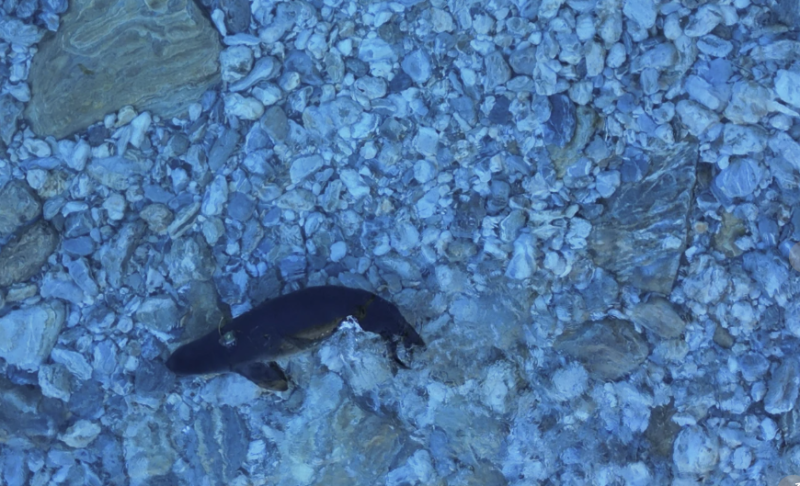Panagis’ “Odyssey” seems to be over – he grew up, he is strengthened and is ready to return to his natural environment
‘Panagis’, a male seal, It comes out of the pool to the Rehabilitation Center in Spata and runs for its delicious meal: a whole mackerel.
It’s been about 3 months since it was found on a beach in Cyprus struggling to be saved. He was only 2 months old, orphaned and weak.
Fortunately, he was found in time, they took over and prepare for his big, autonomous journey into life.
As the photos show, the baby grew up, strengthened and is now a healthy seal, ready to return to where he belongs to the sea.
The international agency Associated Press He visited the MOM facilities where he treats seals and the gyro where he leaves them free when they are ready, capturing frames in frames of return to the marine environment.
Panagis is one of the Mediterranean seals Monachus monachus, who have survived and recovering in a rehabilitation center by MOM, the charity organization involved in the care and protection of the rare marine mammal.
Fokes with big, round eyes and long mustaches come back to the Mediterranean after many years of endangered.
Worldwide it is estimated that there are 800 seals Monachus monachus, With half living in Greek waters, where the extensive coastline offers a plethora of marine caves that provide refuge to females to raise their young.
A unique seal recovery
Mom, housed in the venues of the Athens Zoo in Spata, takes over the mammals when they reach the facilities and take care of their restoration.
There, young mammals are cared for by veterinarians, take a special diet and improve their swimming skills in a pool.
Their carers give them names – often by the people who have found them – but make sure to minimize contact with people to prepare for their return to the sea.
The young seals usually stay in the detox center for several months, until they get enough weight and their natural hunting instinct begins, allowing them to take care of themselves.
Before they are left in their natural environment, it is marked so that Mom can detect them and know their evolution.
Renos returned ‘house’
Renos was found in Anafi in November by a nurse and a soldier from whom he was named.
The seal puppy was sent to Mom’s premises. He received medical care and entered a special diet.
He also recovered a cold, sunny day of February, it was his turn to return to the wild. Mom’s staff loaded him into a cage and transported him to Gyaros, the nearest maritime protected area in Athens.
The liberation site is chosen “based on the fact that there is plenty of food and there is no discomfort from the world, which is very important,” Mr. Vogiatzis, an assistant veterinarian, told AP.
Reno’s crate was deposited on a beach and the door opened. The seal smelled the air timidly and waited. Slowly, he came out of the crate and then speeded up as he descended with his belly on the beach, sank into the sea and left.
From the disappearance to the recovery
Elegant and strikingly fast in water, the seal is a skilful hunter and can consume octopuses, squid and fish up to 3 pounds a day. Of course he does not say “no” to a ready -made meal and often tear the nets to steal fish – something that makes fishermen consider them, enemies.
For decades, they have been hunted, resulting in a significant population reduced between the 1960s and 1980s that led the International Union to maintain nature, (IUCN) to rank them on its list as extremely endangered species.
When rescue efforts began in the 1980s, coupled with public education information programs – and the fishermen – “society has gradually changed to change … and the population began to recover,” said Panagiotis Dendrinos Marine Biologist and Mo. Associated Press.
Mr. Dendrinos, who pioneered the Monachus Monachus conservation program, says he is the only kind of seal in the Mediterranean Sea and also “one of the rarest mammals in the world”.
“In order to protect an animal such as the Mediterranean seal in its natural environment, you must essentially protect the whole marine ecosystem,” he noted.
Efforts have yielded fruit and in recent years, the species has risen to the red list of threatened IUCN species. About a year ago it was improved and was described as “vulnerable”.
Source: Skai
I have worked as a journalist for over 10 years, and my work has been featured on many different news websites. I am also an author, and my work has been published in several books. I specialize in opinion writing, and I often write about current events and controversial topics. I am a very well-rounded writer, and I have a lot of experience in different areas of journalism. I am a very hard worker, and I am always willing to put in the extra effort to get the job done.


